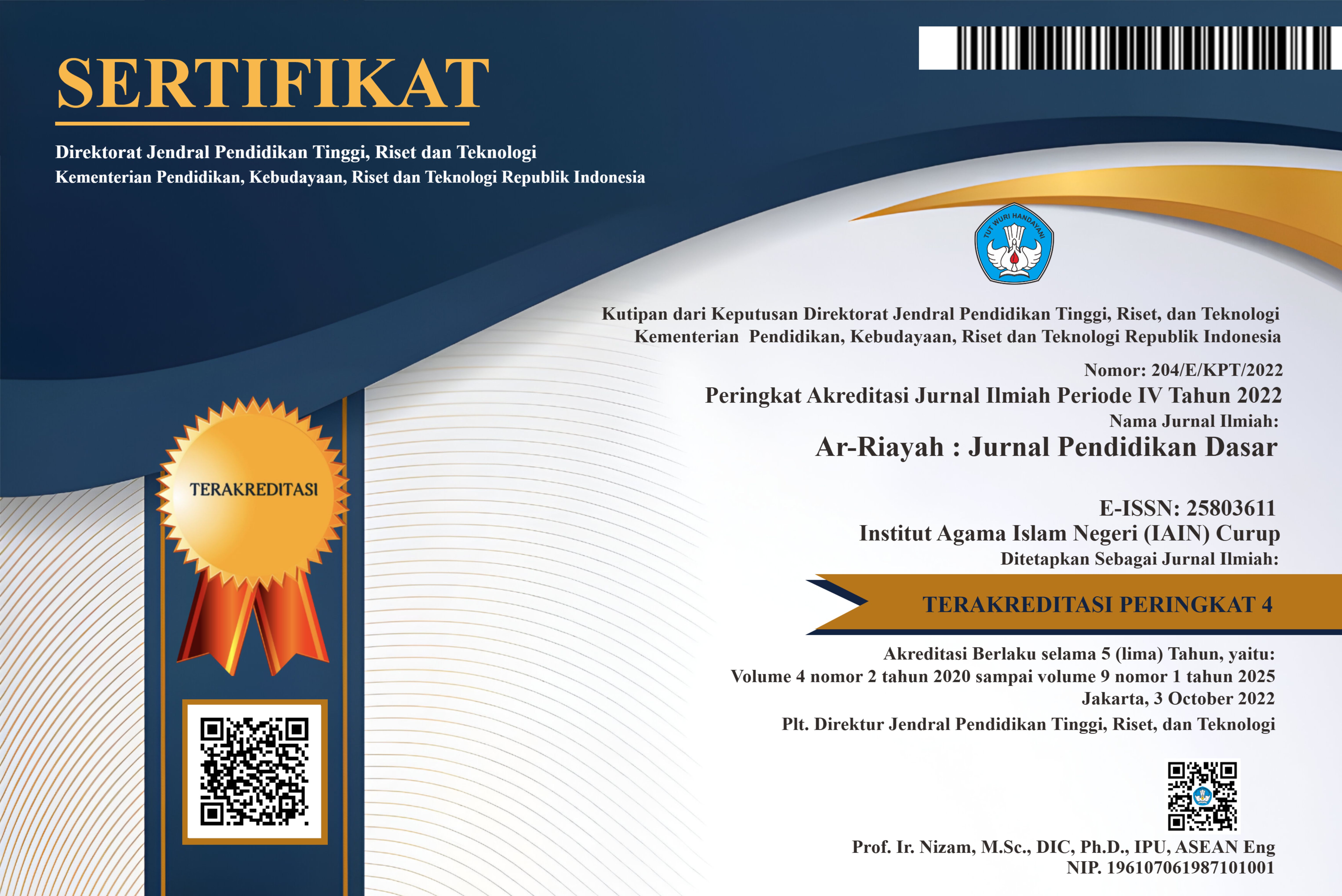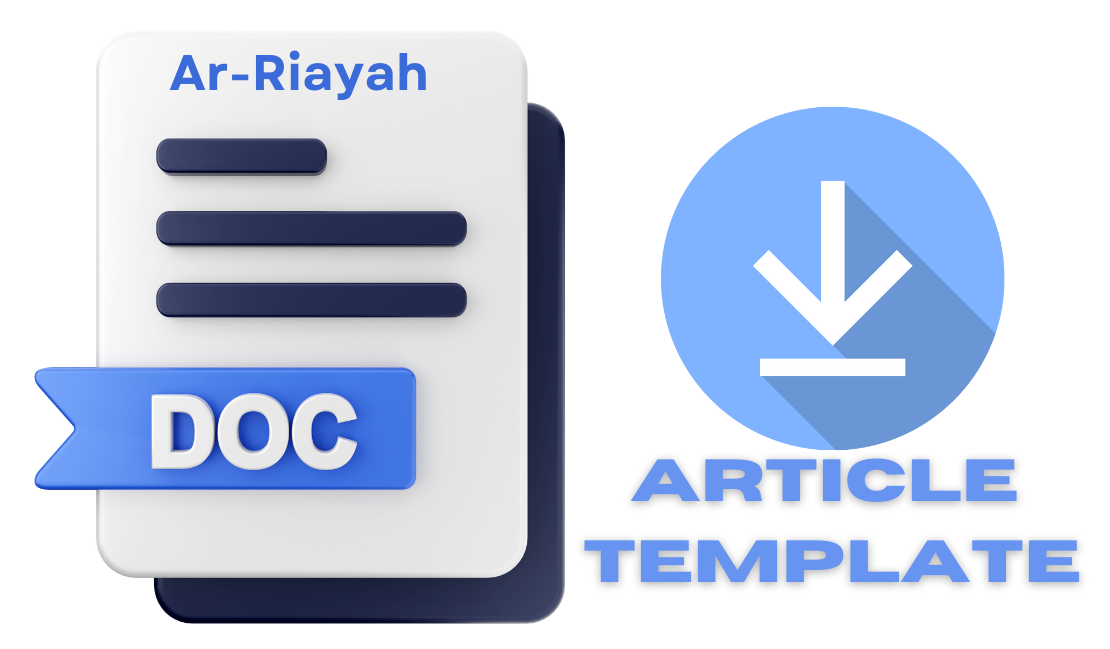Nilai-nilai Pendidikan Karakter dalam Gerak Dasar Tari Kejei Bagi Anak Usia Sekolah Dasar
DOI:
https://doi.org/10.29240/jpd.v6i1.4992Keywords:
The value of character education, kejei dance, variety of movementsAbstract
Downloads
References
Adisusilo, S. 2014. Pembelajaran nilai karakter. Jakarta: Raja Grafindo Persada.
Atmadibrata, Enoch. (1986).“Drama Tari sebagai Satu Bentuk Karya Seniâ€, dalam Pengetahuan Elemen Tari dan Beberapa Masalah Tari. Jakarta : Direktorat Kesenian.
Hidajat, Robby. (2005). Menerobos Pembelajaran Tari Pendidikan. Malang: Banjar Seni Gantar Gumelar
Hidayat, Robby. (2006).“Seni Tari (Pengetahuan Teori dan Praktek Seni Tari Bagi Guru). Malang:Jurusan Seni dan Desain Fakultas Sastra Universitas Negeri Malang,
Kusuma, A. Dani.2007. Pendidikan Karakter. Jakarta: Grasindo.
Suyadi. (2015). Strategi Pembelajaran Pendidikan Karakter. Bandung: Rosdakarya.
Syafril. (2012). Pengantar Pendidikan. Padang: Sukabina.
Uhi, Alexander ( 2017). Filsafat Kebudayaan.Yogyakarta: Pustaka Pelajar
Zen, Zelhendri (2017). Dasar-dasar Ilmu Pendidikan. Depok: Kencana
Retrieved from https://pustaka.ut.ac.id/lib/wp-content/uploads/pdfmk/PDGK440302-M1.pdf
Downloads
Published
How to Cite
Issue
Section
Citation Check
License
Authors who publish with Ar-Riayah: Jurnal Pendidikan Dasar agree to the following terms:
Authors retain copyright and grant the journal right of first publication with the work simultaneously licensed under a Creative Commons Attribution-NonCommercial-ShareAlike 4.0 International License (CC BY-NC-SA 4.0) that allows others to share the work with an acknowledgment of the work's authorship and initial publication in this journal.
Authors are able to enter into separate, additional contractual arrangements for the non-exclusive distribution of the journal's published version of the work (e.g., post it to an institutional repository or publish it in a book), with an acknowledgment of its initial publication in this journal.
- Authors are permitted and encouraged to post their work online (e.g., in institutional repositories or on their website) prior to and during the submission process, as it can lead to productive exchanges, as well as earlier and greater citation of published work (See The Effect of Open Access).










